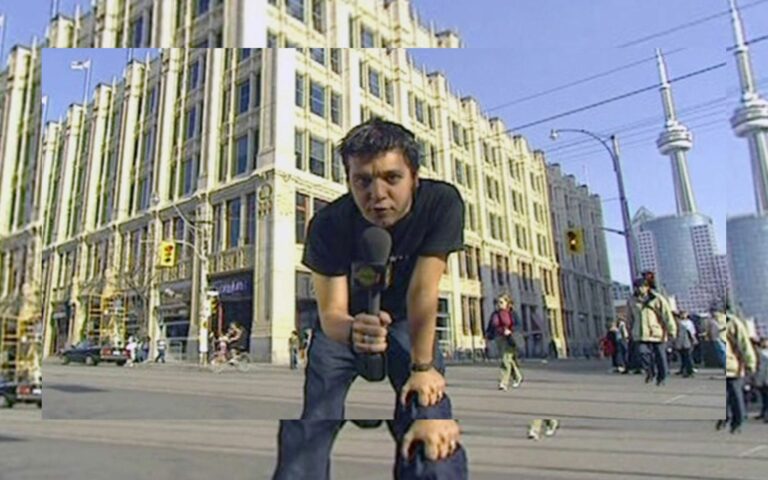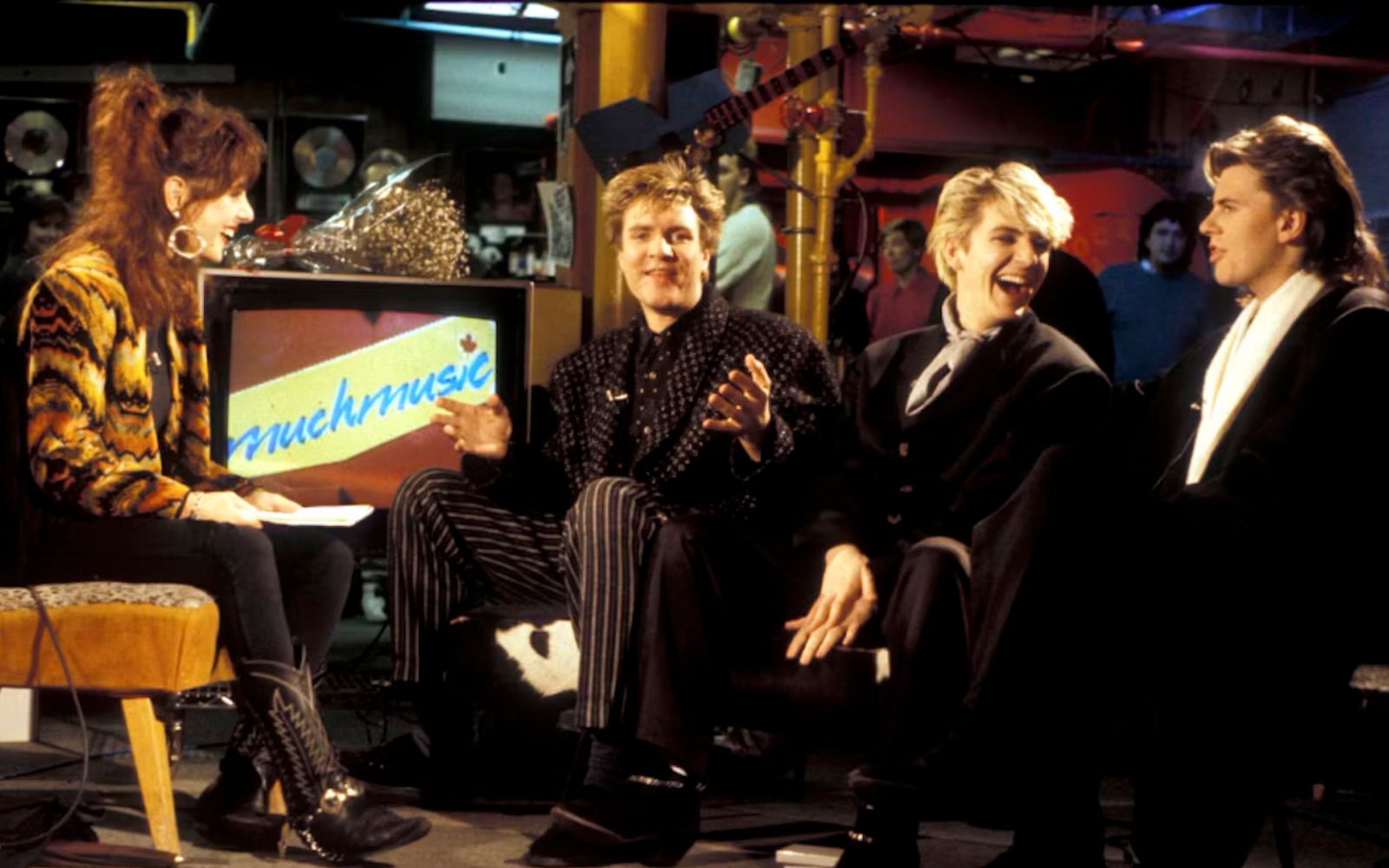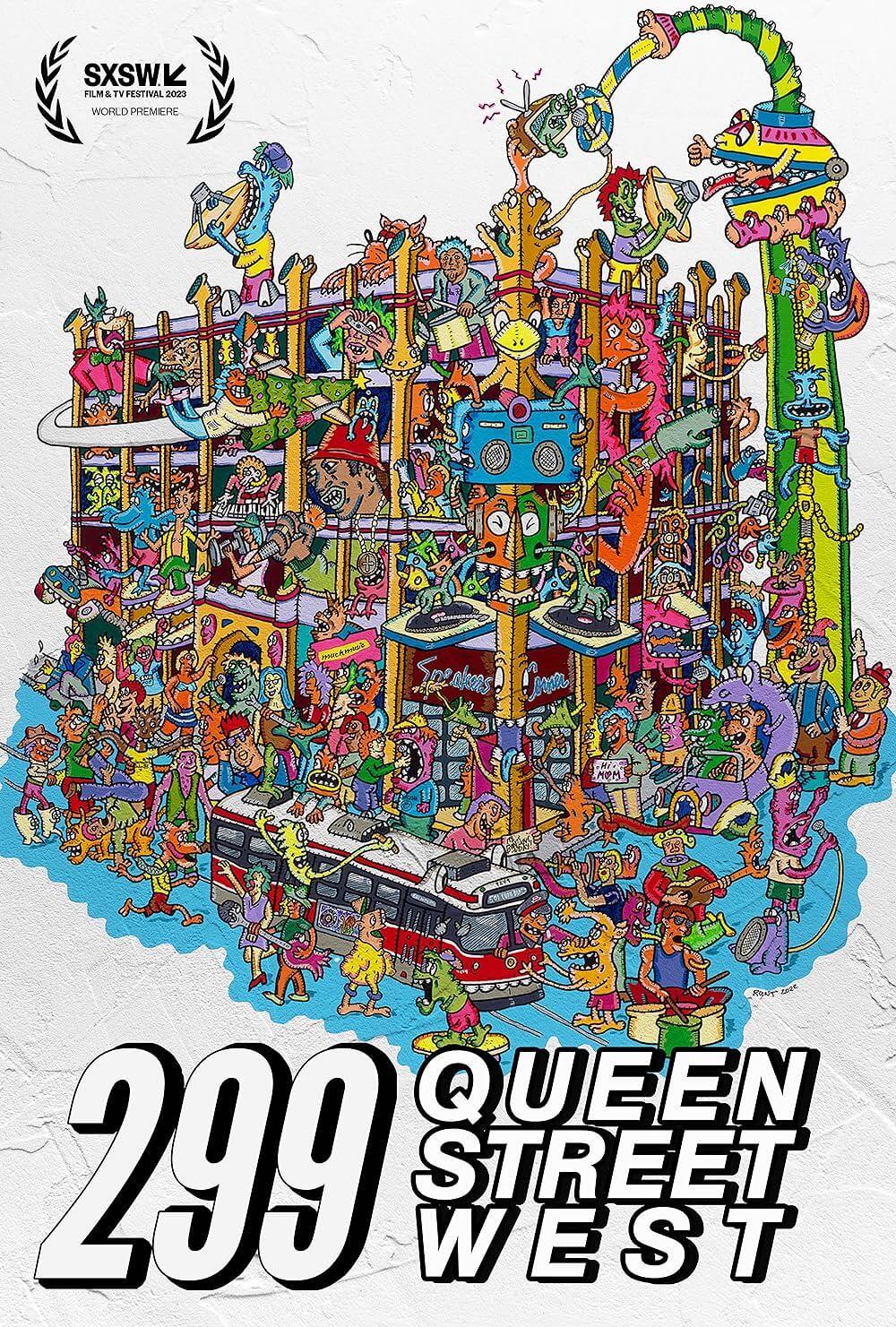By Prabhjot Bains
Danny Boyle’s latest zombie epic feels thrillingly countercultural and brazenly juvenile.

If you were a music fan in Toronto, you knew the address: 299 Queen Street West. The namesake documentary is pure nostalgia fuel for Gen X and millennials, but serves as a beautiful history lesson in music broadcasting for all Canadians.
299 Queen Street West takes a cursory look at MuchMusic’s archives, compiling 400 key moments with voiceovers from the station’s producers and video jockeys. After the film’s debut at SXSW, thousands attended premieres across 12 Canadian cities. I happened to be in Vancouver during one of its final tour stops. After the screening, director Sean Menard invited veteran VJs Monika Deol, Michael Williams, Erica Ehm, George Stroumboulopoulos, and Rick “the Temp” Campanelli on stage to reminisce with the audience.
Since its scrappy beginnings, MuchMusic was the national hub for music and pop culture for over three decades. Hosts wouldn’t rehearse and producers never vetted questions beforehand. The VJs were stylish but green. As their popularity grew, VJs that were once simply music fans became local celebrities. The channel’s candid nature let audiences see themselves in the person conducting the conversation with their favourite artist. The channel broadcast live as a cost-saving measure, which inadvertently led to its signature slow and savoury interviews.
This ad hoc style distinguished Much from the highly produced MTV. When MTV shied away from highlighting black culture, Much gave it a platform through shows like RapCity. Electric Circus moved from the local Citytv slot to a national nighttime dance party on Much. EC-inspired raves take place in Toronto to this day. The Wedge was for the weirdos, lovers of indie and alternative. The programming put people first, which naturally led to inclusive and diverse content.
Much took every opportunity to invite the public to the corner of Queen and John St. The aha-moment occurred the day Duran Duran was in the city and crowds formed to see them. From then on, the station regularly invited fans for an intimate and interactive in-person experience.
The stars that made Much sparkle fulfil the same purpose in 299 Queen Street West. During the first half of the screening, audience members cheered as artists appeared on screen. The room grew quieter as the film’s chronology moved past the 80s (as a 90s baby, that’s when my excitement rose). At intermission I took stock of the room. I thought I was the youngest there until I spotted Monika Deol’s four beautiful kids sitting two rows in front of me. In the second half when the Spice Girls showed up, I seemed to be one of a few still hooting and hollering.

MuchMusic VJ Erica Ehm interviews Duran Duran in 1986.
The film had many hits and a few misses. I wish it gave more time to the 2000s and 2010s. It reveres the 80s and 90s as the station’s glory days and offers a brief explanation on its decline. The tone switches exactly when the more modern footage takes over.
The documentary blames the station’s undoing on its move to reality TV shows and raunchier content. While YouTube replaced on-demand requests for music videos, Much stalled on innovating their music and entertainment content. Today, they post album reviews on TikTok and curate viral videos, but now that they share social media bandwidth with millions of content creators; they’re no longer a cultural monolith.
In my life, MuchMusic hit close to home until the very end. As I walk past the terra cotta building every week, I’m hit with hot summer memories of Degrassi premiere parties in the parking lot. I remember when my friends went for a glimpse of One Direction, and the time I sat in the audience during a chat with Hanson. I’m thrown back to the entire block cordoned off for the Much Music Video Awards. 229 Queen Street West’s final moments featured Justin Bieber in 2012, and Drake surrounded by fireworks on the 2010 MMVA stage. If you’re telling me that was MuchMusic’s demise, then that’s one hell of a funeral.

299 Queen Street West will be available on Crave later this month.
By Prabhjot Bains
Danny Boyle’s latest zombie epic feels thrillingly countercultural and brazenly juvenile.
By Cam Delisle
The music and culture curators are redefining Québec City’s pulse with four festivals, multiple venues, and a vision that goes far beyond FEQ.
By Prabhjot Bains
Director Celine Song's follow-up to Past Lives is a beautifully modern take on the classic love triangle.